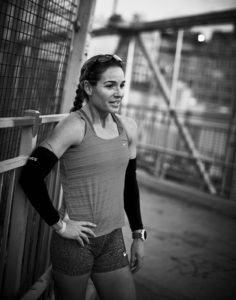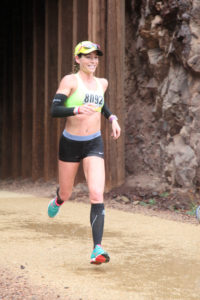 Running is often a sport or activity associated with injuries. And for good reason – the percent of runners in physical therapy, on the injured list, or running through pain is alarmingly high. While doing anything repetitive and strenuous isn’t without injury risk, I’d argue that many injuries can be prevented. It’s always my first priority to keep my runners healthy, as an injured runner simply can’t achieve their goals. I’d also say that I am asked more about injuries than anything else with my runners at Mile High Run Club, and I see literally hundreds of runners each week. Preventing injury can be tough because it takes self control, a clear plan, and a good sense of your own body and what signals to listen to.
Running is often a sport or activity associated with injuries. And for good reason – the percent of runners in physical therapy, on the injured list, or running through pain is alarmingly high. While doing anything repetitive and strenuous isn’t without injury risk, I’d argue that many injuries can be prevented. It’s always my first priority to keep my runners healthy, as an injured runner simply can’t achieve their goals. I’d also say that I am asked more about injuries than anything else with my runners at Mile High Run Club, and I see literally hundreds of runners each week. Preventing injury can be tough because it takes self control, a clear plan, and a good sense of your own body and what signals to listen to.
Too much too soon and overtraining are the big contributors to injuries and aches and pains that can be avoided. For many of us, too much too soon is a big one. In an ideal world, while building mileage after an off season, injury-related hiatus, or picking up running for the first time, you need to ease your body into the demands of running. Our brains often adapt faster than legs or lungs, and so there is often a tendency to go from 0-60. Runners should build base mileage for 3-6 weeks before adding the stress of speed or long runs. Honestly, many of us build minimal base mileage. Sometimes because we are simply super enthusiastic to be running, or a race was tossed onto the calendar with perhaps not enough time to sufficiently build base, train intensely, taper and race. The first thing we typically toss is the base mileage.
Try to keep in mind that physical adaptions take time. Our cells and fibers are stressed and broken down during activity, and then adapt, grow and improve. Without building mitochondria, improving bone density, lung capacity, and introducing the basic stress of base mileage (easy running), injury risk goes way up because our bodies aren’t ready to handle high mileage, speed workout, and long runs. The adaptions from stress don’t occur when we are running, but instead when we are resting. So skipping rest days in the name of progress is actually counter productive. So if you are coming back into running at virtually no miles, build carefully and with purpose. Everyone will be different, but you may simply start by running 4 30-minute runs throughout the week, mostly nonconsecutive days. On those rest days, be sure to hydrate, sleep, and maybe focus on foam rolling and stretching. Where we all start is going to vary based on experience, fitness, and if injury was the cause of the running hiatus. But easing into running should simply be that and nothing more.
The last time I was injured (November 2012), I was forced to take 8 weeks off entirely from running, and then cleared to ease back into the swing of things very carefully – with no speed runs until at least 1 month of easy base-mileage building. I remember how excited I was to be cleared to run. But I also remember how incredibly humbling an easy 30-minute run felt. When I was cleared to get back to speed runs, I was incredibly slow and I was working very hard for numbers that used to represent my easy runs. It can very frustrating. There can be the temptation to then go a little crazy and hit training hard every day. But perspective and a clear plan can help us keep our heads about us.
Overtraining can also lead to injuries. I tend to see these injuries in a few different types of runners: extremely competitive and talented athletes running 70-125 miles per week, and those who perhaps are running 30-60 mile weeks, but also do a ton of other activities – crossfit, fitness or dance classes, or runners who simply take their “recovery run” days too fast, actually not giving their body the runs that should feel super easy. Now, this also isn’t me saying runners should only run. In fact, I’m a coach who is a firm believer in supplemental and supportive training. But the training should complement your training schedule and not compromise it. We are all different. For example, I have found personally that minimal mileage but time lifting heavy in the gym has kept me feeling stronger and more efficient as a runner than ever, and I have luckily not been injured since 2012. Other runners may find weekly yoga helps their tight hamstrings, or that boxing helps their core and upper body strength.
At the end of the day, there should be purpose behind training days and days off. Know the purpose. If there really isn’t one, why are you doing it? Sometimes “because I want to,” or “for fun” is a totally fine reason. Just be honest about where you are in your running journey and how to protect your health. If you are injured, there go all those goals and races.


 Now, here’s the thing: there’s absolutely no way I could run a 1:21 Half Marathon on a course with less hills. No two courses are created equal. This course handed me that time. I’m not saying I didn’t work for it, but that time would not translate the same to say NYC Half Marathon. My guess is that same performance would give me more of a 1:24-1:25. But that’s why it’s important to choose your races wisely. What’s your objective? What is your ace? Your weakness? I don’t need crowds and tons of people on the course to run well. Others do. I know how to run hills perhaps better than flat courses. Others don’t. You are different from the next runner. Learn what works for you.
Now, here’s the thing: there’s absolutely no way I could run a 1:21 Half Marathon on a course with less hills. No two courses are created equal. This course handed me that time. I’m not saying I didn’t work for it, but that time would not translate the same to say NYC Half Marathon. My guess is that same performance would give me more of a 1:24-1:25. But that’s why it’s important to choose your races wisely. What’s your objective? What is your ace? Your weakness? I don’t need crowds and tons of people on the course to run well. Others do. I know how to run hills perhaps better than flat courses. Others don’t. You are different from the next runner. Learn what works for you.


